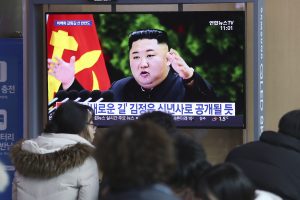When the sun rises on October 10, thousands of North Korean troops will be gathered in Pyongyang for what is likely to be the largest military parade in the country’s history. The occasion is the 75th anniversary of the founding of the Workers’ Party of Korea in 1945. Much of the attention has focused on the military hardware that North Korea is likely to show off (see Bruce Klingner’s preview for The Diplomat here). While the hardware is no doubt significant — and will this year be a reminder of just how unsuccessful the Trump administration’s attempts at diplomacy with North Korea have been in yielding concrete results — there’s an important domestic context to the parade as well.
Like most of Asia and the world, North Korea has had a challenging year. Not only has Pyongyang taken measures to deal with the COVID-19 pandemic, which it described early on as a matter of “national survival,” but North Korea has also coped with multiple typhoons and flooding. This year’s difficult events happened to follow a shift in tone last year by leader Kim Jong Un, who, after the February 2019 Hanoi summit with the United States, began to lay the groundwork for continuing the pursuit of economic growth under economic sanctions. At the Fourth Plenum of the Seventh Central Committee of the Workers’ Party of Korea, Kim began to emphasize that “socialist construction” would require self-reliance and a “self-supporting national economy.” Implicitly, the message was for the WPK elite to expect harder times ahead as sanctions relief was not forthcoming.
This weekend’s parade will have an important ideological component as 2020 enters its final stretch. For Kim Jong Un, the parade will be a moment to celebrate the continued successes in North Korea’s national defense programs, including by reintroducing “strategic” (nuclear) weapons to the forefront. In September 2018, while diplomacy with the United States and South Korea was ongoing, Kim oversaw a “denuclearized” national founding day parade, which omitted North Korea’s nuclear-capable systems. This weekend’s parade will likely not hold back, allowing for an unrestricted celebration of indigenous accomplishment.
Despite the difficult year, Kim has continued to see progress in North Korea’s indigenous weapons programs in a positive light. To make his satisfaction clear, he has continued to elevate and promote key officials involved in overseeing progress in this field. Most notably, Ri Pyong Chol has been elevated, with days to go before this weekend’s parade, to marshal of the Korean People’s Army (alongside Pak Jong Chon, apparently Kim’s most trusted general).
If Kim delivers a speech ahead of the parade — and precedent suggests he will — expect to see a strong emphasis on themes carrying on from the Fourth Plenum. Given the recent announcement of an “80-day” battle ahead of the Eighth Party Congress in January 2021, this year may wrap up with a show of ideological fervor. As state media announced earlier this week, “The entire Party and the whole country should wage another all-out campaign,” because North Koreans “still face the challenges that cannot be overlooked and there are many goals we have to attain within this year.”

































